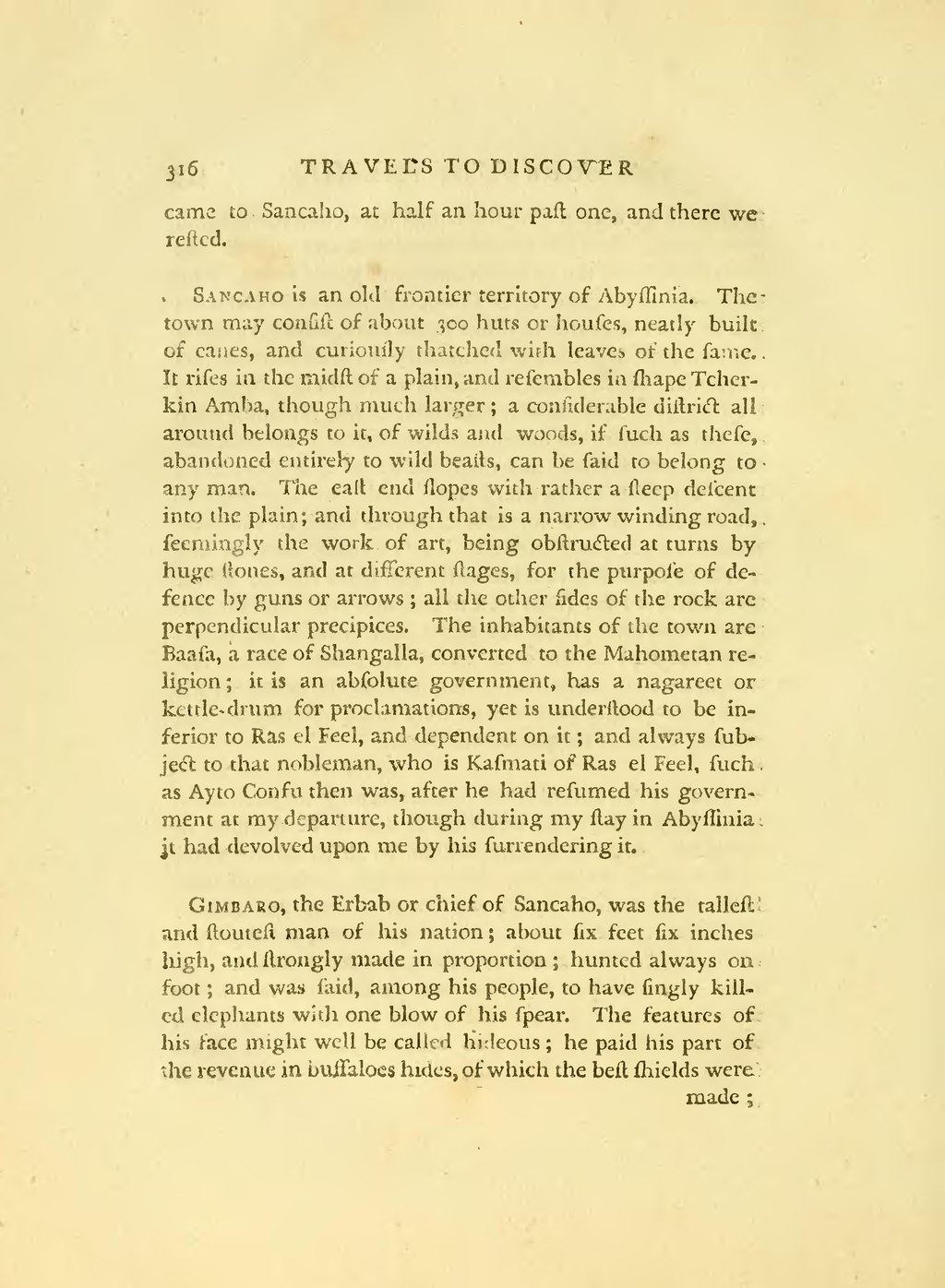came to Sancaho, at half an hour past one, and there we retired.
Sancaho is an old frontier territory of Abyssinia. The town may consist of about 300 huts or houses, neatly built of canes, and curiously thatched with leaves of the fame. It rises in the midst of a plain, and resembles in shape Tcherkin Amba, though much larger; a considerable district all around belongs to it, of wilds and woods, if such as these, abandoned entirely to wild beasts, can be said to belong to any man. The east end slopes with rather a steep descent into the plain; and through that is a narrow winding road, seemingly the work of art, being obstructed at turns by huge stones, and at different stages, for the purpose of defence by guns or arrows; all the other sides of the rock are perpendicular precipices. The inhabitants of the town are Baasa, a race of Shangalla, converted to the Mahometan religion; it is an absolute government, has a nagareet or kettle-drum for proclamations, yet is understood to be inferior to Ras el Feel, and dependent on it; and always subject to that nobleman, who is Kasmati of Ras el Feel, such, as Ayto Confu then was after he had resumed his government at my departure, though during my stay in Abyssinia, it had devolved upon me by his furrendering it.
Gimbaro, the Erbab or chief of Sancaho, was the tallest and stoutest man of his nation; about six feet six inches high, and strongly made in proportion; hunted always on foot; and was said, among his people, to have singly killed elephants with one blow of his spear. The features of his face might well be called Kideous; he paid his part of the revenue in buffaloes hides, of which the best shields were
